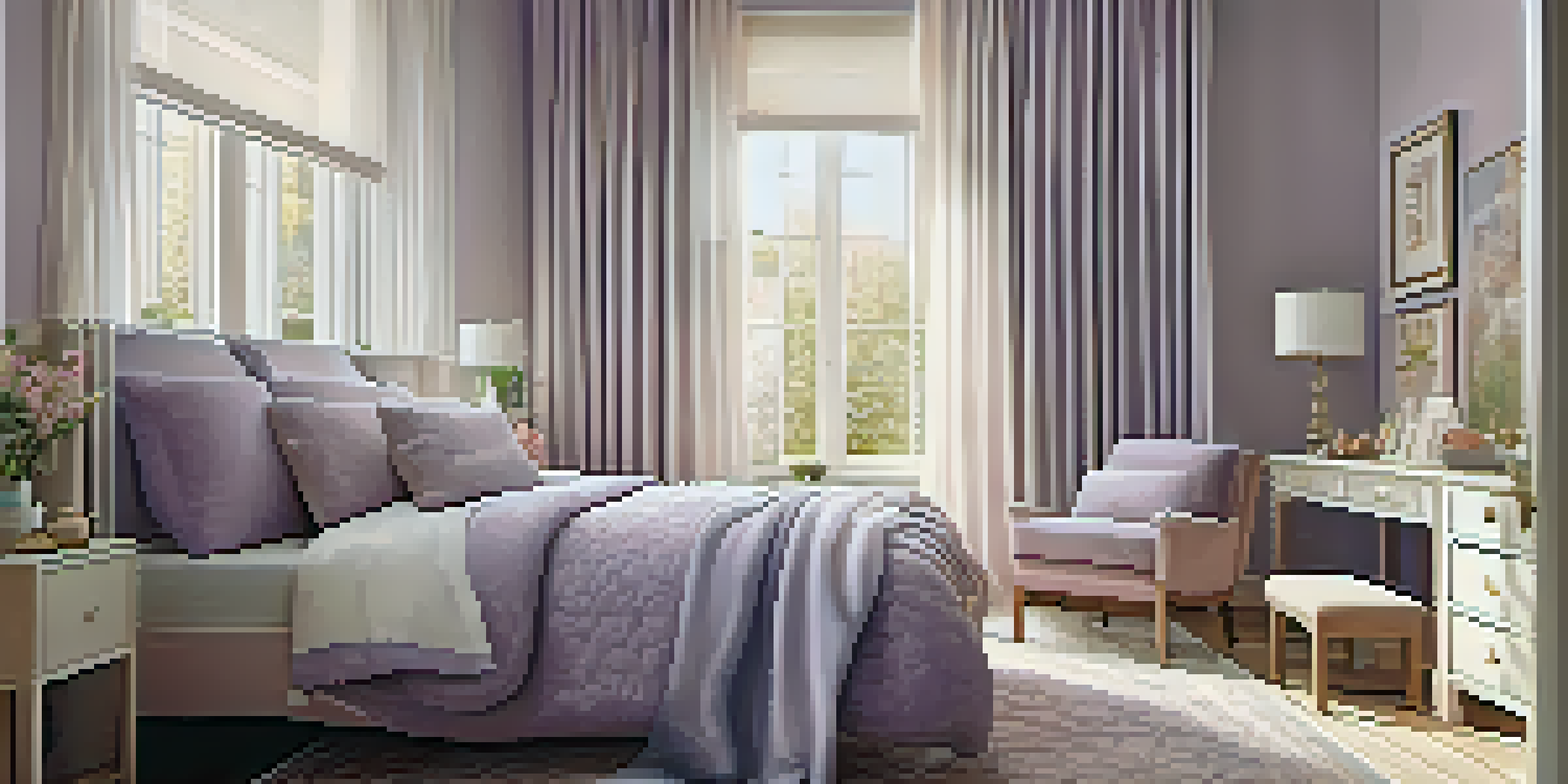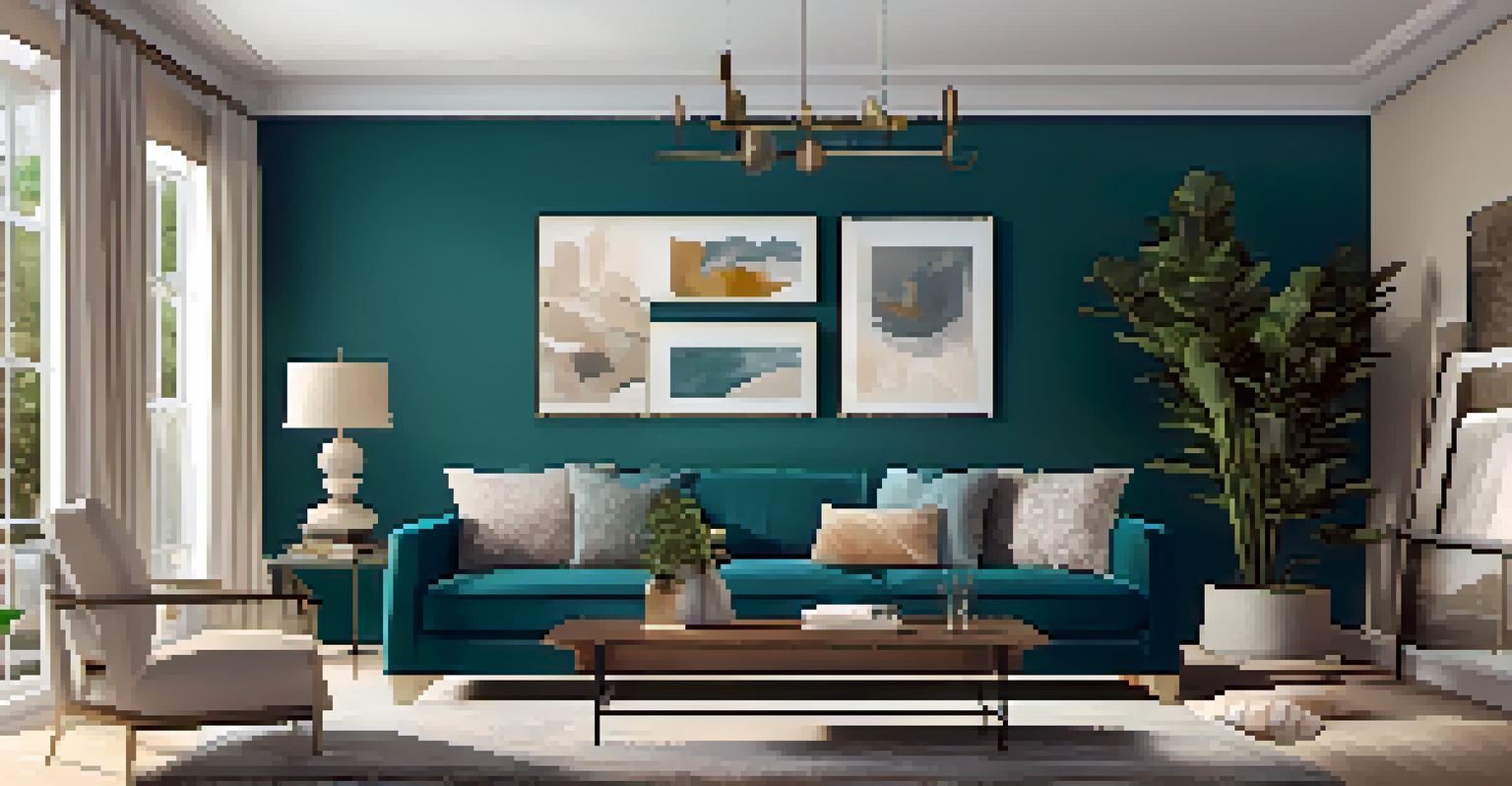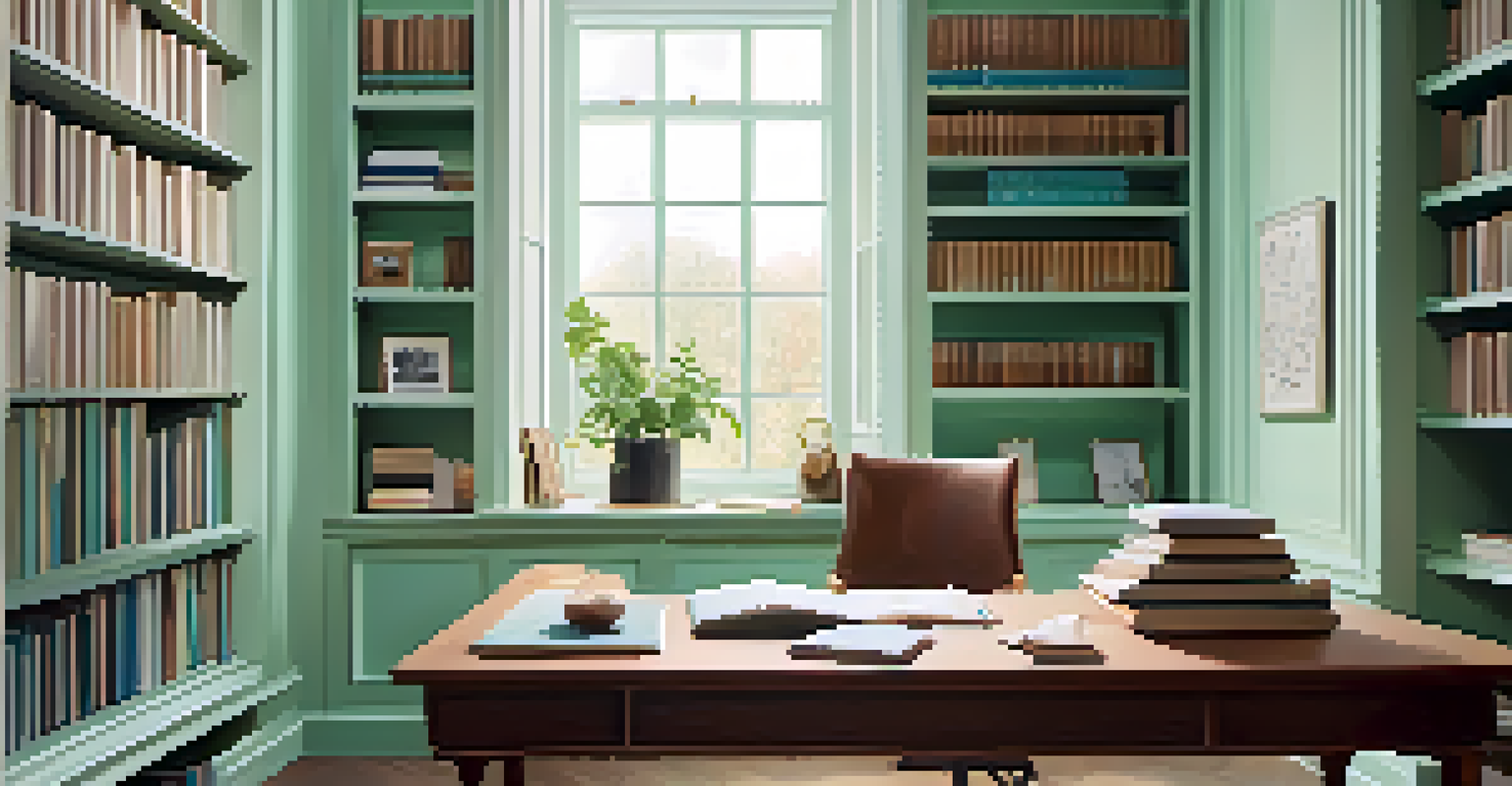Color Schemes That Make Small Rooms Feel Larger

Understanding Color Theory for Small Spaces
Color theory is the foundation of how colors interact and affect our perception. When it comes to small rooms, the right color choices can create an illusion of space and openness. Think of colors as tools; each one has the potential to either constrict or expand your visual environment.
Color is the keyboard, the eyes are the harmonies, the soul is the piano with many strings.
Light colors, for example, tend to reflect more light, making a room feel airy and open. On the other hand, darker shades can absorb light, giving the impression of a cozier but smaller space. Understanding these principles is crucial for making the best choices in your home.
By grasping the basics of color theory, you can start selecting shades that not only suit your style but also enhance the spatial dynamics of your room. It’s all about using color strategically to your advantage.
Light Colors: The Go-To Choice for Small Rooms
When in doubt, opt for light colors. Soft whites, light grays, and pastels can make a small room feel much larger than it actually is. These shades reflect light, making the space feel airy and open, which is especially important in confined areas.

Imagine a small bedroom painted in a soft lavender; the lightness of the color can create a calm, expansive atmosphere, perfect for relaxation. It also makes it easier for natural light to bounce around the room, enhancing that spacious feel.
Light Colors Expand Small Spaces
Using light colors like soft whites and pastels can make small rooms feel larger and more open.
Incorporating light colors into your decor doesn’t mean you have to sacrifice personality. You can always add colorful accents through pillows, artwork, or rugs to infuse vibrancy into your space without overwhelming it.
Monochromatic Schemes for Seamless Flow
A monochromatic color scheme involves using varying shades of a single color. This approach can create a seamless flow in a small room, making it feel more cohesive and expansive. For instance, using different shades of blue can evoke a sense of tranquility while visually stretching the space.
Colors, like features, follow the changes of the emotions.
The beauty of monochromatic schemes lies in their simplicity. By minimizing color contrasts, you avoid visual interruptions that can make a room feel cluttered. This aesthetic can be especially effective in small living rooms or studios.
Moreover, you can play with texture and patterns within the same color family to add depth, ensuring your space remains visually interesting without feeling cramped.
Accent Walls: A Bold Statement Without Being Overwhelming
Accent walls are a great way to introduce color without overwhelming a small room. By painting one wall a darker or bolder color, you can create a focal point that draws the eye, making the rest of the space feel wider. For example, a deep teal accent wall can beautifully contrast with light beige walls.
This technique not only adds visual interest but also helps to define areas within open-concept spaces. It’s like giving your room a personality while maintaining an airy feel.
Monochromatic Schemes for Cohesion
Monochromatic color schemes create a seamless flow that enhances the sense of space in small rooms.
Just remember to balance the boldness of your accent wall with lighter decor elements to ensure the room doesn’t feel too closed in. It's all about finding the right equilibrium.
Using Cool Colors to Create an Illusion of Depth
Cool colors, such as blues and greens, are known for their calming effects and ability to create depth. These colors can make walls appear to recede, which helps in making a small room feel larger. Picture a soft mint green room; it invites a peaceful, open vibe that feels refreshing.
In addition to their depth-creating abilities, cool colors can also evoke a sense of tranquility. This can be particularly beneficial in bedrooms or study spaces, where relaxation and focus are essential.
Pairing cool colors with plenty of natural light can enhance this effect even further. It’s like creating your own serene oasis right at home.
Neutrals: Versatile Choices for Small Spaces
Neutrals are timeless and versatile, making them an excellent choice for small rooms. Shades like beige, taupe, and soft gray provide a calming backdrop that can make any space feel more expansive. They also serve as a blank canvas for adding personal touches through decor.
The beauty of using neutrals is that they work well with almost any accent color, allowing you to change the mood of the room simply by swapping out accessories. A neutral palette offers endless possibilities for customization without feeling overwhelming.
White Maximizes Space and Light
White reflects light beautifully, creating an illusion of endless space while maintaining a cozy atmosphere.
Additionally, using varying shades of neutrals can add depth and interest to the room. It’s a classic strategy that never goes out of style.
The Power of Light: Utilizing White for Maximum Space
White is perhaps the ultimate color for making small rooms feel larger. It reflects light beautifully and can create the illusion of endless space. A completely white room might seem stark, but when layered with textures and patterns, it can feel both inviting and expansive.
Consider how a white-walled living room with varied textures—like a plush white rug, linen curtains, and wooden furniture—can create a cozy yet spacious atmosphere. This layered approach keeps the room from feeling flat or sterile.

Moreover, white works seamlessly with any color accents you choose, allowing your space to evolve with your style over time. It’s a versatile choice that stands the test of time.